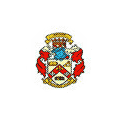Studies & Degrees in Art History
Choose where you would like to study Art History:
ArgentinaAustraliaAustriaBelarusBelgiumCanadaChileChinaCubaCzech RepublicDenmarkEstoniaFinlandFranceGermanyGreeceHong KongHungaryIndiaIrelandIsraelItalyJapanMaltaMexicoNetherlandsNew ZealandNicaraguaPolandRussiaSamoaSloveniaSpainSwedenSwitzerlandThe United KingdomThe United StatesTurkeyZimbabweArt History Study Programs
As human nature is inclined to appreciate beauty, art has been a significant part of culture since ancestry. As a matter of fact, it dates back into pre-historic times represented by carvings discovered on caves. Art is but not limited to a single form hence branching out into many different specializations such as architecture, painting, sculpture, etc. No wonder its origin and development has been a subject of inquiry officially known as “Art History” pioneered by the Greek sculptor Xenokrates of Sicyon as early as 280 BC. As it involves diverse discipline, many other historians emerged thereafter until the mid-19th century when Heinrich Wolfflin considered as “Father of Modern Art History” came into the scene.
Creating an artwork is a gift for it is a product of a creative mind going beyond what has been illustrated. This best explains why art is a powerful expression made through symbols that trigger mental, emotional, and psychological faculties of man. In turn, it is not confined to visual arts that primarily appeals to the sense of sight for there are still many other aspects. It does not exclusively evolve into painting, architecture, and sculpture which have been much popularized. It also includes music, literature, and film that appeal directly to the spirit of man more than the senses. In consequence, this only goes to show that art history also deals with an array of art forms which are equally interesting subjects of inquisition.
Art Historians are as precious as priced artworks considering their contribution to “Humanities” as a discipline. In particular, new generation of artworks demand fresh generation of art storytellers, too. It is for the reason that artistic creations are being scrutinized within the context of its respective period. In the same way, it is also examined based on the context of the artist’s world such as iconography and symbolism. Meaning it also involves research on the background of the creator comprised of his influence and prejudices. These only comprise the subjective side of analysis while there are still many other objective facets for instance colour, dimension, line, shape, and texture. No doubt, every historian is groomed as another art genius to be able to interpret any given artwork.
Art History is offered as major and minor courses of study. Major course program include advanced courses in Ancient Art, Baroque Art, Renaissance Art, Modern Art, and Non-Western Art, etc. Minor course program may likewise include advanced level courses given that students have taken introductory courses that could suffice as pre-requisites. Either case, art making is a required course to expose students into creative painting, sculpture, and architectural design. Further studies may be undertaken such as Master of Arts in Art History, Historical and Sustainable Architecture, and Museum Studies. Doctor of Philosophy course programs are also accessible hence the Doctor of Philosophy in Art History, Art History and Archaeology, and Culture, Arts, and Media.
There are many different career opportunities for Art Historians. As a matter of fact the diverse field of work includes education, real estate, journalism, museum management, dealership, government agencies, etc. More often than not, Art Historians are concentrated on urban places which are home to universities, museums, and art galleries.




